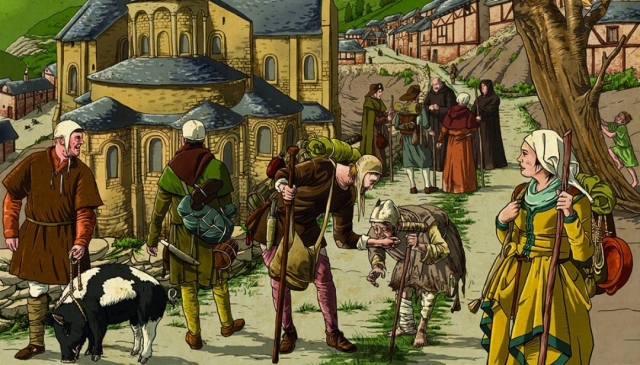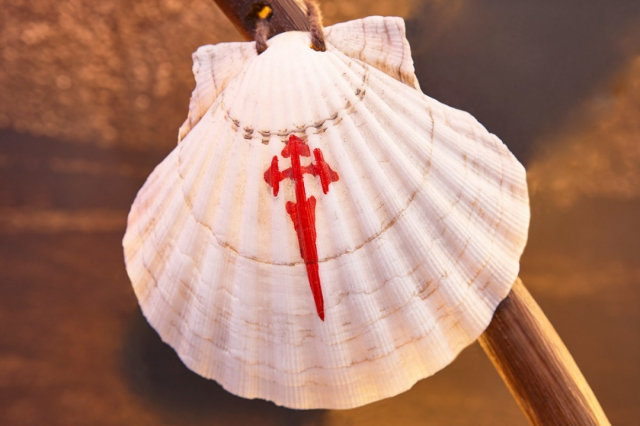The Camino de Santiago in the Middle Ages: How did pilgrims make the pilgrimage 1,000 years ago?
We show you how pilgrims in the Middle Ages experienced the Camino de Santiago.
-->
The Way of Saint James in the Middle Ages
The discovery of the Camino de Santiago in the Middle Ages
- The tomb of St. James the Apostle is discovered
- Alfonso II became the first pilgrim
- The creation of the Codex Calixtinus
The evolution of the Jacobean routes in the Middle Ages
Due to the influx of pilgrims in those years, improvements were made to the road by nobles and ecclesiastics, among others. This improvement in infrastructure took place in the 11th century, a period in which bridges were also built and hospitals were founded.
- Construction of Santiago Cathedral
Although many people were already making pilgrimages to Santiago to see the tomb of the apostle, it was not until years later that the construction of Santiago Cathedral was completed. The work was officially completed in April 1211, but even before that there were several churches that guarded the remains of the apostle St. James.
Another important point about the Jacobean routes at that time is that there were many risks along the way. The influx of pilgrims attracted many thieves, which led to an increase in criminal activity. It also caused many traders to take advantage of the situation and raise the price of their products to outsiders.
Origin of hundreds of legends of the Way of St. James
One of the most striking aspects for pilgrims on the Camino de Santiago, are all its myths and legends. Most of these were created during the Middle Ages and are still present today. Some of the best known are the legend of Fuente Regina and the legend of the rooster and the hen, although there are many that exist.
Whether you are going to do the Camino de Santiago or not, you should know the legends of the Camino de Santiago. These help us to know the importance that had this pilgrimage route at that time, and is an example of how pilgrims lived the experience of the pilgrims of the Middle Ages.
The origin of the symbols of the Way of Saint James
- The Compostela in the Middle Ages
Since the birth of the Camino de Santiago, pilgrims arriving at the tomb of the apostle received a scallop shell as accreditation. As it was so easy to plagiarise, the ecclesiastics decided to change this recognition with the letters of proof, which we now know as the Compostela.
- Pilgrims' clothing in the Middle Ages
It was in the Middle Ages that the classical pilgrim's clothing was born. Some of the classic elements were the staff, the bag or the scallop shell, elements that are still linked to the Camino de Santiago and the pilgrims but not as part of the clothing, but as souvenirs.
- The shell of the Way of St. James in the Middle Ages
As we mentioned before, the scallop shell was given to pilgrims before the Compostela was born. That is why this symbol was so closely linked to the Camino de Santiago. So much so that it was known when a pilgrim was already back home, as it was because he was carrying the shell that he had been given as accreditation.
Related
Routes
Blog
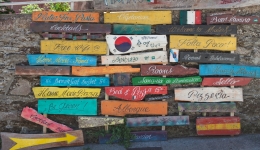 How to get to Sarria to do the Camino de Santiago
How to get to Sarria to do the Camino de Santiago
 Descubre la magia del Camino de Santiago Portugués por la costa
Descubre la magia del Camino de Santiago Portugués por la costa
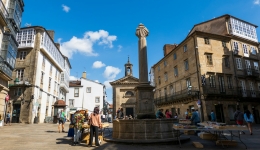 5 tours culturales que puedes hacer en Galicia si decides hacer un alto en el camino
5 tours culturales que puedes hacer en Galicia si decides hacer un alto en el camino
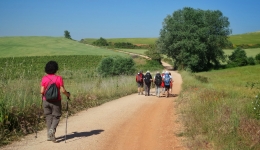 Doing the Camino de Santiago in June: What you should know?
Doing the Camino de Santiago in June: What you should know?
Information
Points of interest
Cities & Towns | Hostels | Lodgings | Restaurants | Saddlery | Doctors | Points of interest | Bikes workshop
Contact us | Privacy policy | Cookies policy | | Terms of use | Authorship | Web Map | Consentimiento
© Copyright LA VOZ DE GALICIA S.A. Polígono de Sabón, Arteixo, A CORUÑA (ESPAÑA) Inscrita en el Registro Mercantil de A Coruña en el Tomo 2438 del Archivo, Sección General, a los folios 91 y siguientes, hoja C-2141. CIF: A-15000649
Developed and managed byHyliacom
